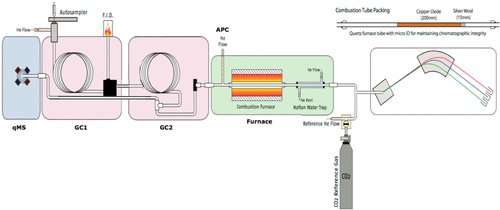Sniffing out real truffles

At a cost of thousands of dollars per pound, truffles are an expensive food. The fungi are prized for their distinctive aroma, and many foods claim truffles or their aromas as ingredients. But some of these foods may actually contain a much less pricey synthetic truffle compound. To help detect food fraud, researchers report in Analytical Chemistry that they have developed a technique that discriminates between these natural and synthetic compounds.
White truffles (Tuber magnatum Pico) are the most valuable species of the fungus, and researchers have previously identified bis(methylthio)methane as the key compound responsible for white truffle aroma. Synthetic bis(methylthio)methane, produced from petrochemicals, has been approved by the World Health Organization as a food additive, yet some foods made with this cheaper compound may still command a premium price if consumers believe that they contain authentic white truffles. Current methods cannot reliably discriminate between natural and synthetic bis(methylthio)methane. To help fight food fraud, Luigi Mondello and colleagues wanted to develop a new approach.
The researchers exploited the differences in carbon isotope ratios between plant- and petroleum-derived versions of bis(methylthio)methane. After optimizing the technique of multidimensional gas chromatography coupled to combustion-isotope ratio mass spectrometry, they used the method to compare the carbon isotope ratios of bis(methylthio)methane from 24 genuine white truffles harvested at different locations in Italy, two commercial intact truffles and 14 commercial samples of foods flavored with truffles or truffle aroma. The approach could clearly discriminate foods that contained synthetic truffle aroma or a mixture of synthetic and natural aromas, and it could distinguish among products containing white truffle and those containing other species of the fungus. The researchers conclude that the improved technique can help validate foods that claim to contain truffles or natural truffle aroma.
More information: Danilo Sciarrone et al. Multidimensional Gas Chromatography Coupled to Combustion-Isotope Ratio Mass Spectrometry/Quadrupole MS with a Low-Bleed Ionic Liquid Secondary Column for the Authentication of Truffles and Products Containing Truffle, Analytical Chemistry (2018). DOI: 10.1021/acs.analchem.8b00386
Abstract
Truffles are among the most expensive foods available in the market, usually used as flavoring additives for their distinctive aroma. The most valuable species is Tuber magnatum Pico, better known as "Alba white truffle", in which bis(methylthio)methane is the key aroma compound. Given the high economical value of genuine white truffles, analytical approaches are required to be able to discriminate between natural or synthetic truffle aroma. Gas chromatography coupled to combustion-isotope ratio mass spectrometry (GC-C-IRMS), exploiting the 13C/12C ratio abundance of the key flavorings compounds in foods, has been a recognized technique for authenticity and traceability purposes; however, a number of issues have greatly limited its widespread use so far. In the present research, a high-efficiency HS-SPME MDGC-C-IRMS with simultaneous quadrupole MS detection has been applied for the evaluation of bis(methylthio)methane, resolving the coelution occurring with other components. With the aim to minimize the effect of column bleeding on δ13C measurement, a medium polarity ionic liquid-based stationary phase was preferred to a polyethylene glycol one, as the secondary column. In total, 24 genuine white truffles harvested in Italy were analyzed, attaining a δ13C values between −42.6‰ and −33.9‰, with a maximum standard deviation lower than 0.7‰. Two commercial intact truffles and 14 commercial samples of pasta, sauce, olive oil, cream, honey, and fresh cheese flavored with truffle aroma were analyzed, and the results from δ13C measurement were evaluated in comparison with those of genuine "white truffle" range and commercial synthetic bis(methylthio)methane standard.
Journal information: Analytical Chemistry
Provided by American Chemical Society



















